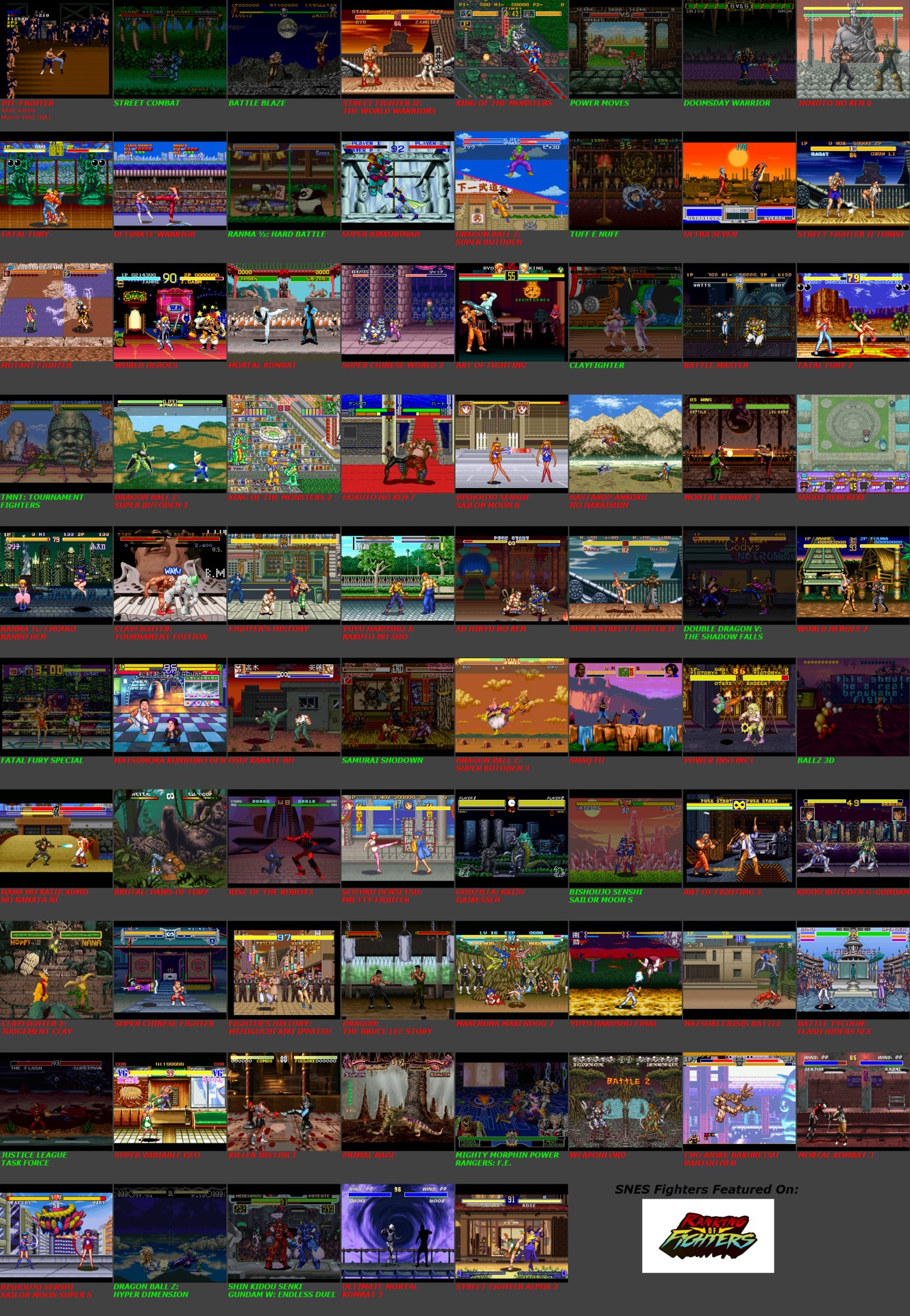No intro this time, because I've been busy on this work-of-concept proof for a little checklist relating to Giant Bomb's Ranking of Fighters show. I noticed that they've been particularly focused on the Super Nintendo Entertainment System - a console I know very well, and very much the hard way - and wanted to chart their progress through the system's not-inconsiderable fighter library.

The image is above is very much a "version 1.0". I still need to include episode numbers for the games already featured (those with green names and filtered screenshots) and company/release dates for all the rest. I'd like to come back to it every so often for tweaks, cleaner/better font work, and of course to account for any new changes to GB's highly scientific fighter rankings as more SNES games are added to it.
For now, though, let's get onto this week's blogging before I hold up the Spotlight any longer:
Thimbleweed Park
Our Indie Game of the Week was Thimbleweed Park, the throwback adventure game from Ron Gilbert and Gary Winnick, the duo behind Maniac Mansion. A spiritual successor to same, Thimbleweed Park is equally notable for its large-headed characters, old-school wall o' verbal commands as an intermediate between text and cursor-based parsers, and multiple character switching mechanic. Much in the same way that the original Maniac Mansion was an ode to '50s B-movies, Thimbleweed takes after more contemporary (but still decades-old) fare like The X-Files and Twin Peaks in its 1987-set story of FBI agents and small-town weirdness.
It's also pretty tough, though I invited that headache onto myself by opting for the "hard" difficulty ("easy" simply removes some of the puzzles, which feels too much like cutting out the game content I paid for) and steadfastly refusing to use the in-game hint system, instead brute-forcing my way through by revisiting locations and considering what inventory items I happen to have on me. This process is exacerbated almost to breaking point by how, at this mid-point of the game, I have five different characters to choose between, each with their own approach to NPC dialogues (the sweary Ransome the Insult Clown is unlikely to sweet-talk anyone, but maybe there's a situation where his insults are the answer) and an inventory system that requires they seek each other and exchange items face-to-face. It's a wrinkle where I'm only now appreciating how irritating it is, but I've managed to get this far and am disinclined to stop. At least the game is never ambiguous about the current objective: each character carries a "to-do list" of sorts that highlights what their goals are, including any extra steps needed to reach them.
It's something I intend to grapple with this weekend, but though I'm starting to wane on it everything I wrote for its Indie Game of the Week entry still more or less stands. Its onslaught of LucasFilm references is pandering in a way I appreciate, the writing's sharp and clever if a little too meta sometimes, and I've been a fan of this particular style of game that I'm always appreciative when someone makes a new one.
Link here: Indie Game of the Week 109: Thimbleweed Park
Steins;Gate
Double-dose of sci-fi adventure gaming this week. Not that Steins;Gate is much of a game, being one of the preeminent visual novels to have the privilege of an official English localization. It's a story, told almost entirely through text boxes, character portraits, and backgrounds, about a group of geeky students and their adventures putting together a working time machine. I found it very entertaining, to the extent that I'm now witnessing the story again via its anime adaptation, but it's a seriously long game that spends a considerable portion of its time setting up its characters, including the faux-megalomaniacal weirdo of a protagonist, before everything kicks into gear for its twisty thriller second-half.
The player interaction boils down to responding to phone calls and text messages, with your choice of reply - including the option of not replying at all - subtly changing your relationships with the game's characters. The true ending, for example, involves nurturing one relationship in particular, which means picking all the right options for your digital conversations with that person. It's a little obtuse, but with the "skip text" button that fast-forwards all already-seen text and a per-chapter auto-save, it doesn't take long to see all the game's different routes.
It's been a while since I've read anything novel-length - my attention span is hot garbage these days - so I appreciated the slower pace of Steins;Gate and intend to keep going down the visual novel rabbit hole. I have a few ideas of what I might want to check out next, not least of which is Steins;Gate's "interquel" Steins;Gate 0 and recent barnstormer 428: Shibuya Scramble, but that can wait. We have all the time in the world, after all.
Link here: Bucketlog February: Steins;Gate
Log in to comment